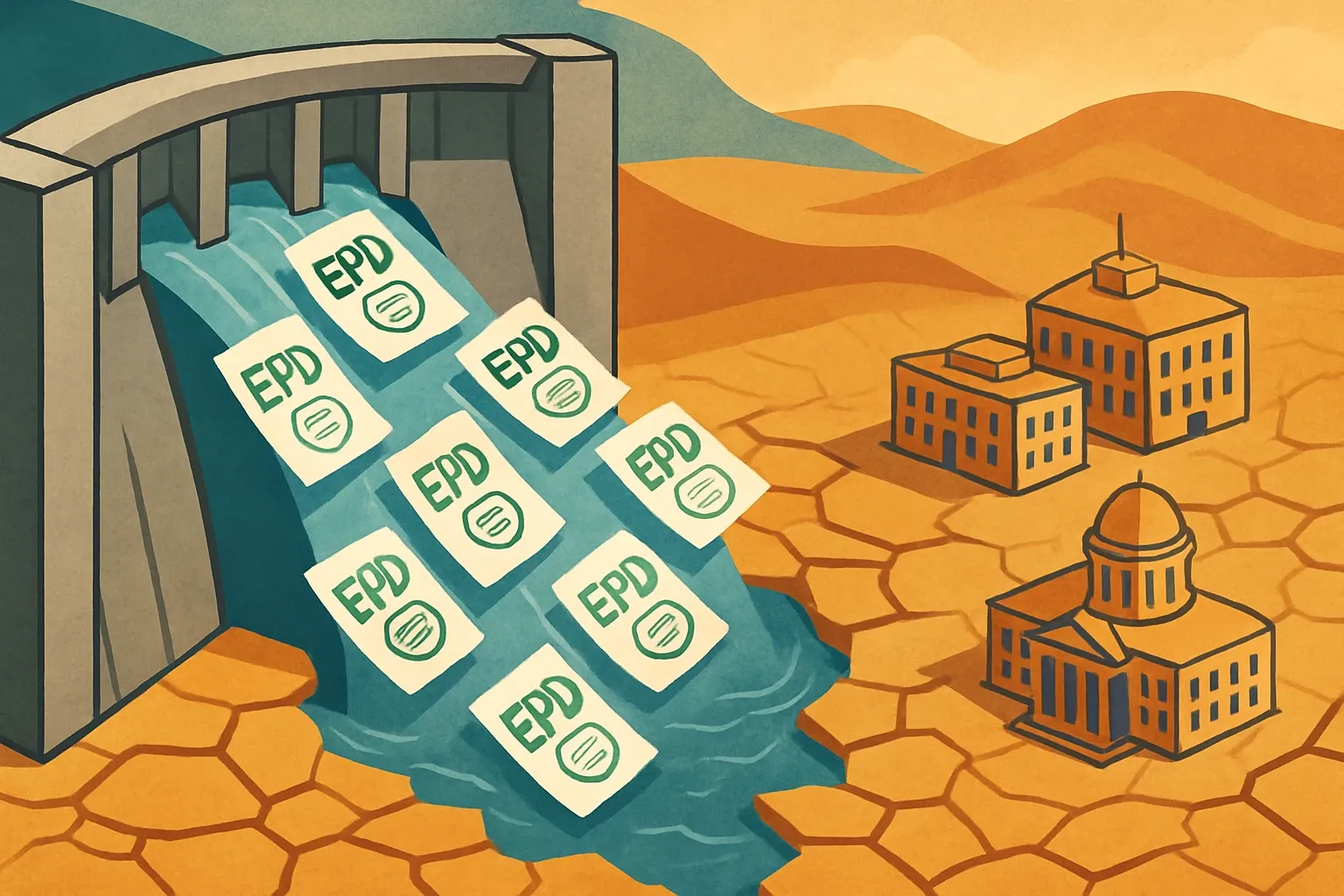SB 5810: Washington’s Budget Powers Buy-Clean EPD Push
Hidden in Washington’s new two-year operating budget is a tidy $1.112 million line item to stand up the state’s first public database of Environmental Product Declarations (EPDs) and working-conditions data. When that system goes live, state agencies will finally have the plumbing they need to enforce the 2024 Buy Clean & Buy Fair law. If your concrete, steel, or lumber still lacks a current EPD, the countdown just started.


A budget bill with unexpected bite
Senate Bill 5810 isn’t an environmental statute—it’s the 2025-2027 operating budget. Yet Section 25 quietly directs $1.112 million from the Climate Commitment Account to launch key tools promised by the 2024 Buy Clean & Buy Fair Act (SB 5810, 2025). The cash funds: a public reporting portal, a technical work group, and the first legislative progress report.
Quick refresher: What Buy Clean & Buy Fair demands
Second Engrossed Substitute House Bill 1282 requires contractors on large state-funded projects to report, for at least 90 % of the cost of each covered product, a current EPD plus basic labor data (2ESHB 1282 Bill Report, 2024). Reporting starts July 1 2025 for projects over 100 k ft², and expands to every new state project by July 1 2027. Miss the paperwork, miss the bid.
Why the database matters
Agencies had zero capacity to collect or verify EPDs at scale. The new portal fixes that—and removes the last excuse not to enforce the law. Think of it like the moment streaming went from DVDs in the mail to Netflix’s instant queue. Once digital infrastructure exists, expectations shift overnight.
Dates that should be on your wall calendar
- January 2025: Commerce begins building the portal (SB 5810 Sec. 25, 2025).
- July 1 2025: EPD reporting mandatory for mega-projects (>100 k ft²).
- January 2026: First legislative report likely to highlight lagging product categories.
- July 1 2027: Requirement hits every new state construction contract, no matter the size.
The supply gap—and the revenue risk
Commerce counted only 42 Washington-made concrete EPDs in public databases last year (Dept. of Commerce, 2024). The state buys thousands of mixes each biennium. The math is clear: suppliers without an EPD will watch rivals scoop up spec after spec. Worse, once designers bake EPD targets into their BIM libraries, switching back is painful.
Pro tips to stay ahead
- Audit your catalog now. One EPD for a flagship mix or beam won’t cover all variants.
- Pick the PCR your competitors use so your numbers line up and specifiers feel safe. A good LCA partner will do that homework for you.
- Collect a full 2024 utility dataset while it’s still fresh. Scrambling for meter bills next spring is a productivity sink.
- Budget time for verification. Program operators are quoting 8-12 weeks; slip here and your bid window may slam shut.
What if Initiative 2117 had passed?
It didn’t. Voters rejected the repeal of the Climate Commitment Act by 62 %–38 % (WA SoS, 2024), so the climate account funding in SB 5810 stands. No back-door escape hatch remains.
Bottom-line takeaway
SB 5810’s modest appropriation is the starter pistol for real Buy Clean enforcement. Manufacturers that sprint now—securing robust, third-party-verified EPDs—will find agency spec sheets and AEC bid portals opening like automatic doors at the grocery store. Those that stroll risk being locked out. Simple stuff, really.
Frequently Asked Questions
Does every product on a project need an Environmental Product Declaration under Washington’s Buy Clean & Buy Fair law?
For covered projects, at least 90 % of the cost of each covered material (concrete, steel, engineered wood, insulation, and glazing) must have a current EPD reported (2ESHB 1282, 2024).
When does the EPD reporting requirement actually start to apply?
July 1 2025 for projects larger than 100 k ft²; July 1 2027 for all new state construction contracts, regardless of size (2ESHB 1282, 2024).
Is the state offering money to help small manufacturers create EPDs?
2ESHB 1282 allows Commerce to offer financial assistance subject to available funds. So far, SB 5810 funds only the reporting portal, but additional grants could materialize in supplemental budgets.
What happens if an Initiative repeals the Climate Commitment Act in the future?
SB 5810 ties its Buy Clean funding to the Climate Commitment Account. If that revenue source vanished, lawmakers would need to re-authorize money from another fund or pause implementation.
